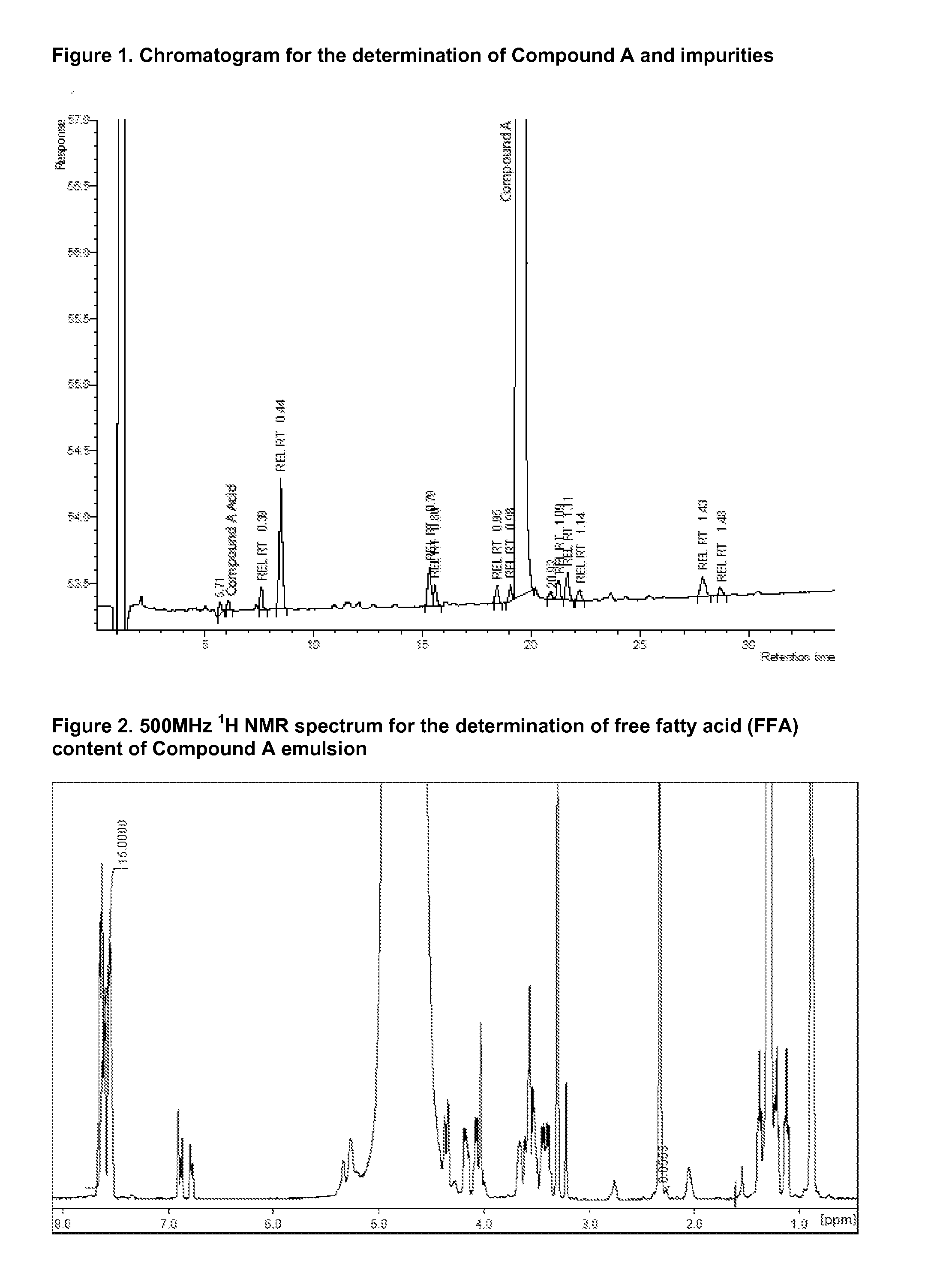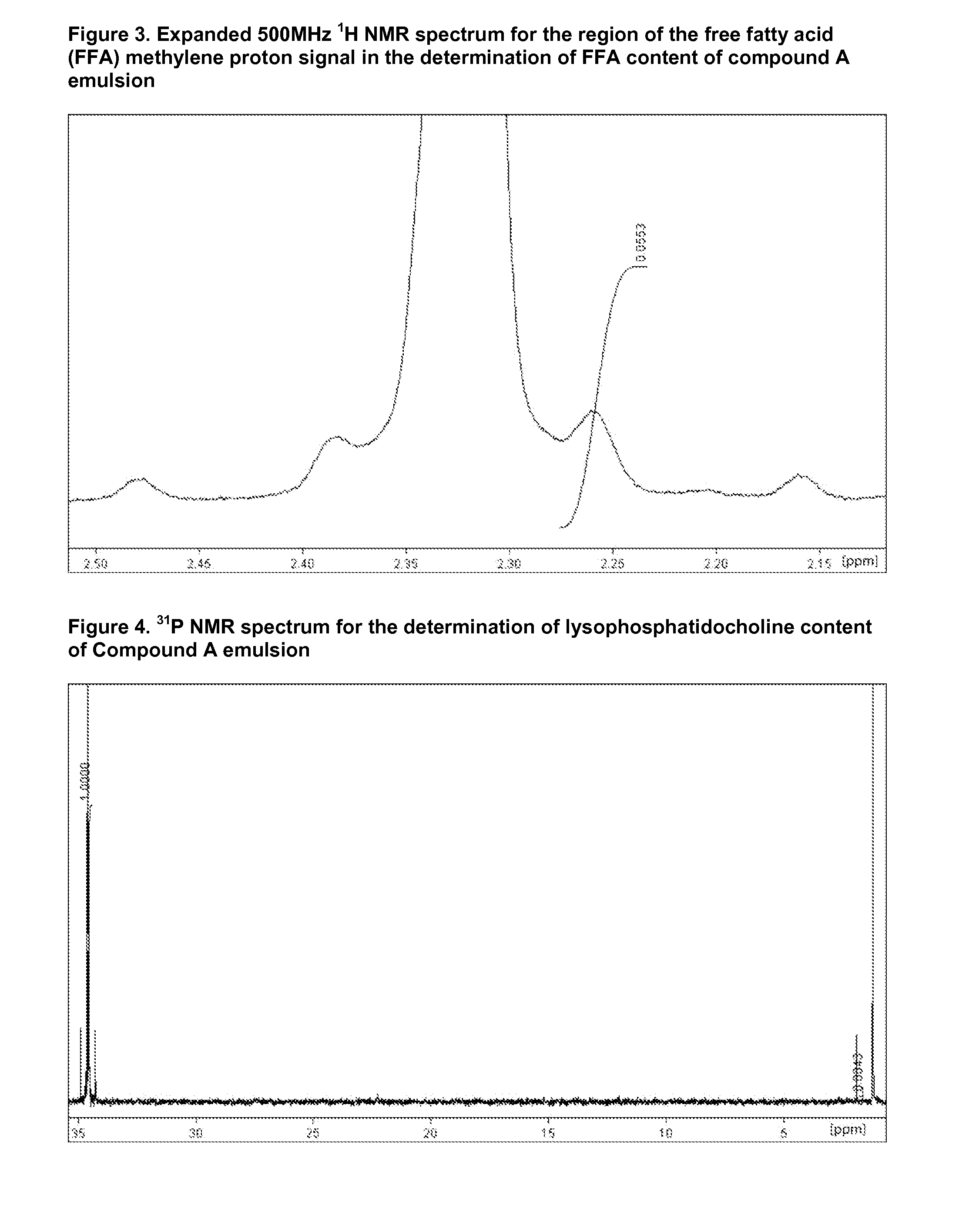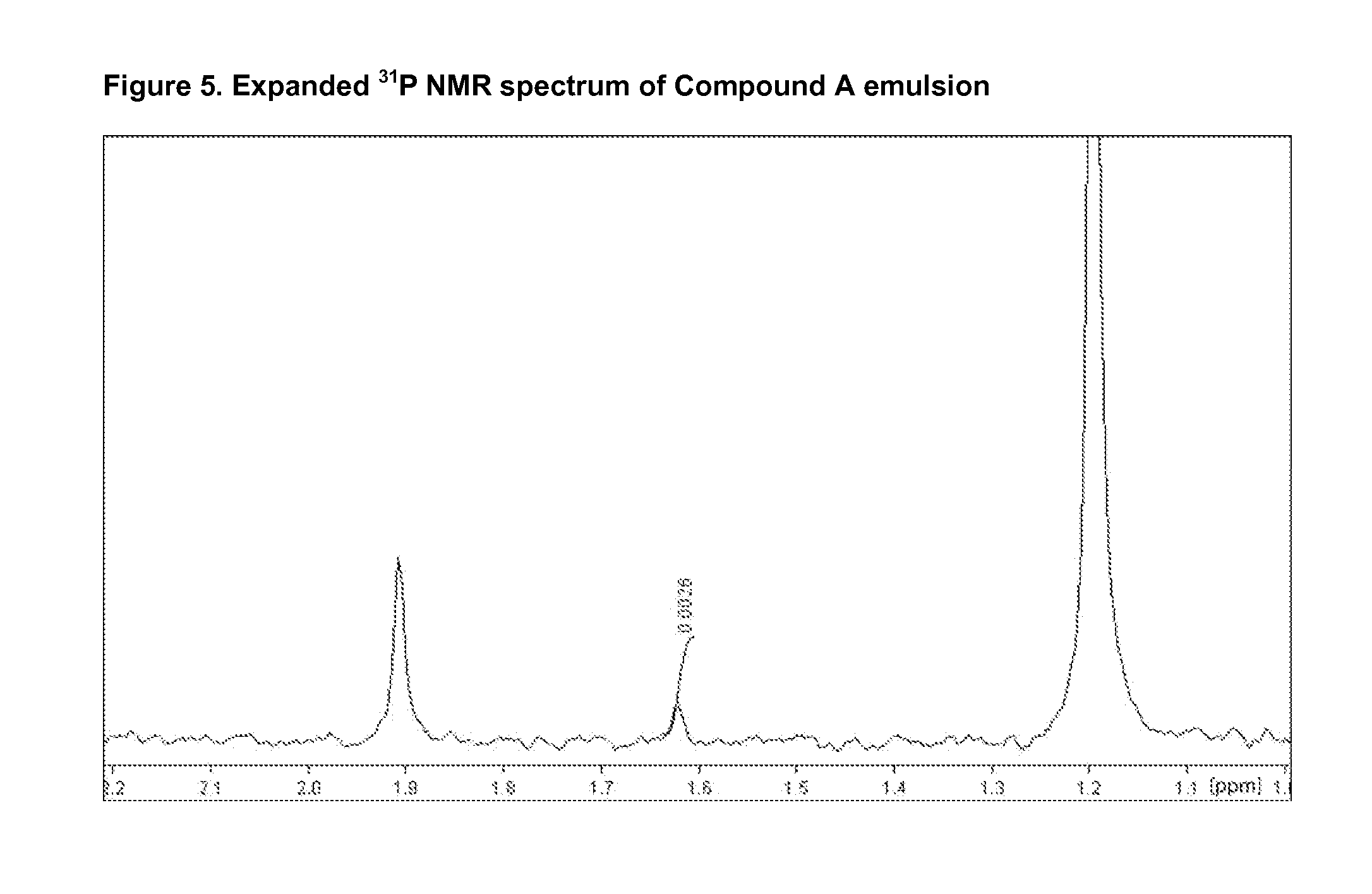Injectable Emulsion of Sedative Hypnotic Agent
a sedative and injection-based technology, applied in the direction of biocide, oil/fat/waxes non-active ingredients, drug compositions, etc., can solve the problems of non-optimal solubility, significant challenge, and thermodynamic instability of all true emulsions, so as to improve the storage stability of emulsions, improve physical stability, and low viscosity
- Summary
- Abstract
- Description
- Claims
- Application Information
AI Technical Summary
Benefits of technology
Problems solved by technology
Method used
Image
Examples
example 1
Evaluation of Preliminary Compound A Emulsions (WO2005 / 009420)
[0093]Compound A emulsions were prepared as defined in Example 6 of WO2005 / 009420 with the following compositions (all values % w / w).
Batch 1Batch 2Batch 3Batch 4Batch 5Batch 6Batch size3.5 L3.5 L2.0 L0.5 L0.5 L0.5 LSoybean oil202020544Miglyol000503810NLabrafac00002.50WL1349Compound A44081020Egg lecithin2.42.42.41.21.21.2Lipoid E80Glycerol2.52.52.52.252.252.25Oleic acid0.030.030.030.0300.3Histidine0.10.10.10.10.10.1EDTA0.0050.0050.0050.0050.0050.005WFITo 100To 100To 100To 100To 100To 100NaOHTo pH 8To pH 8To pH 8To pH 8To pH 8To pH 8
[0094]Evaluation was performed after storage under refrigerated conditions (2-8° C.) for approximately 10 months (Batches 1-3) or approximately 6 months (batches 4-6).
MeanMeanEffectivePoly-Mean #EmulsionDiameter 1dispersityparticles >BatchAppearance(nm)Index 14.99 μm / mLBatch 1No oiling>1 μm—3.22 × 106Batch 2Large oil>1 μm—2.22 × 107droplets visibleBatch 3Surface oiling>1 μm—1.17 × 106Batch 4Surf...
example 2
Production of an Improved Compound A Emulsion at 100 g Scale
[0096]The pharmaceutical formulation made in the example below comprises the following components:
ComponentPurposeWeight %Compound AActive ingredient6Lipoid MCT (PhEur)Oil9Oleic acid Ph EurStabilizer0.3Lipoid S75 LecithinEmulsifier2.5GlycerolTonicity2Water for injectionTo 100%
Emulsion Adjusted to pH 7 with 1 M NaOH.
[0097]Compound A, the oil and oleic acid were weighed into a 150 ml tall form beaker (to produce the oil phase). The beaker was then swirled by hand until the oil phase became homogenous in appearance.
[0098]The lecithin, glycerol and water were weighed into a second 150 ml tall form beaker (to produce the aqueous phase). The aqueous phase ingredients were then dispersed using an Ultra Turrax T25 homogenizer at 11,000 rpm for 1 minute.
[0099]The homogenizer head was then transferred to the oil phase beaker and the aqueous phase ingredients were added and homogenized at 11,000 rpm for 1 minute. This produced a coars...
example 3
Production of an Improved Compound A Emulsion at 200 g Scale
[0105]The pharmaceutical formulation made in the example below comprises the following components:
ComponentPurposeWeight %Compound AActive ingredient6Lipoid MCT (PhEur)Oil9Oleic acid Ph EurStabilizer0.03Lipoid S75 LecithinEmulsifier2.5GlycerolTonicity2.25Water for injectionTo 100%
Emulsion adjusted to pH 7 with 1 M NaOH.
[0106]Compound A, the oil and oleic acid were weighed into a 250 ml tall form beaker (to produce the oil phase). The beaker was then swirled by hand until the oil phase became homogenous in appearance.
[0107]The lecithin, glycerol and water were weighed into a second 250 ml tall form beaker (to produce the aqueous phase). The aqueous phase ingredients were then dispersed using an Ultra Turrax T25 homogenizer at 11,000 rpm for 2 minutes.
[0108]The homogenizer head was then transferred to oil phase beaker and the aqueous phase ingredients were added and homogenized at 11,000 rpm for 2 minutes. This produced a coa...
PUM
| Property | Measurement | Unit |
|---|---|---|
| mean droplet size | aaaaa | aaaaa |
| wt % | aaaaa | aaaaa |
| wt % | aaaaa | aaaaa |
Abstract
Description
Claims
Application Information
 Login to View More
Login to View More - R&D
- Intellectual Property
- Life Sciences
- Materials
- Tech Scout
- Unparalleled Data Quality
- Higher Quality Content
- 60% Fewer Hallucinations
Browse by: Latest US Patents, China's latest patents, Technical Efficacy Thesaurus, Application Domain, Technology Topic, Popular Technical Reports.
© 2025 PatSnap. All rights reserved.Legal|Privacy policy|Modern Slavery Act Transparency Statement|Sitemap|About US| Contact US: help@patsnap.com



